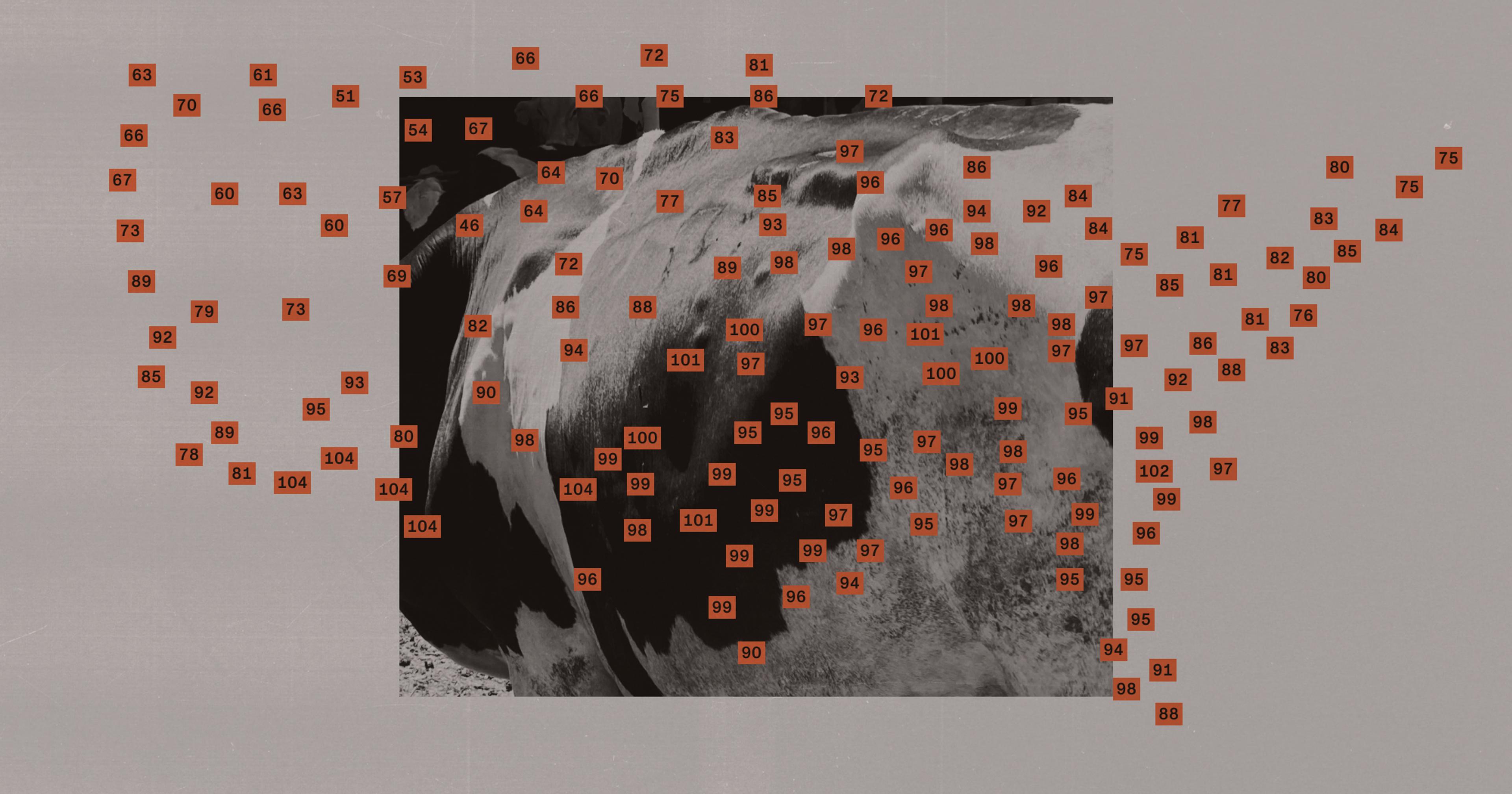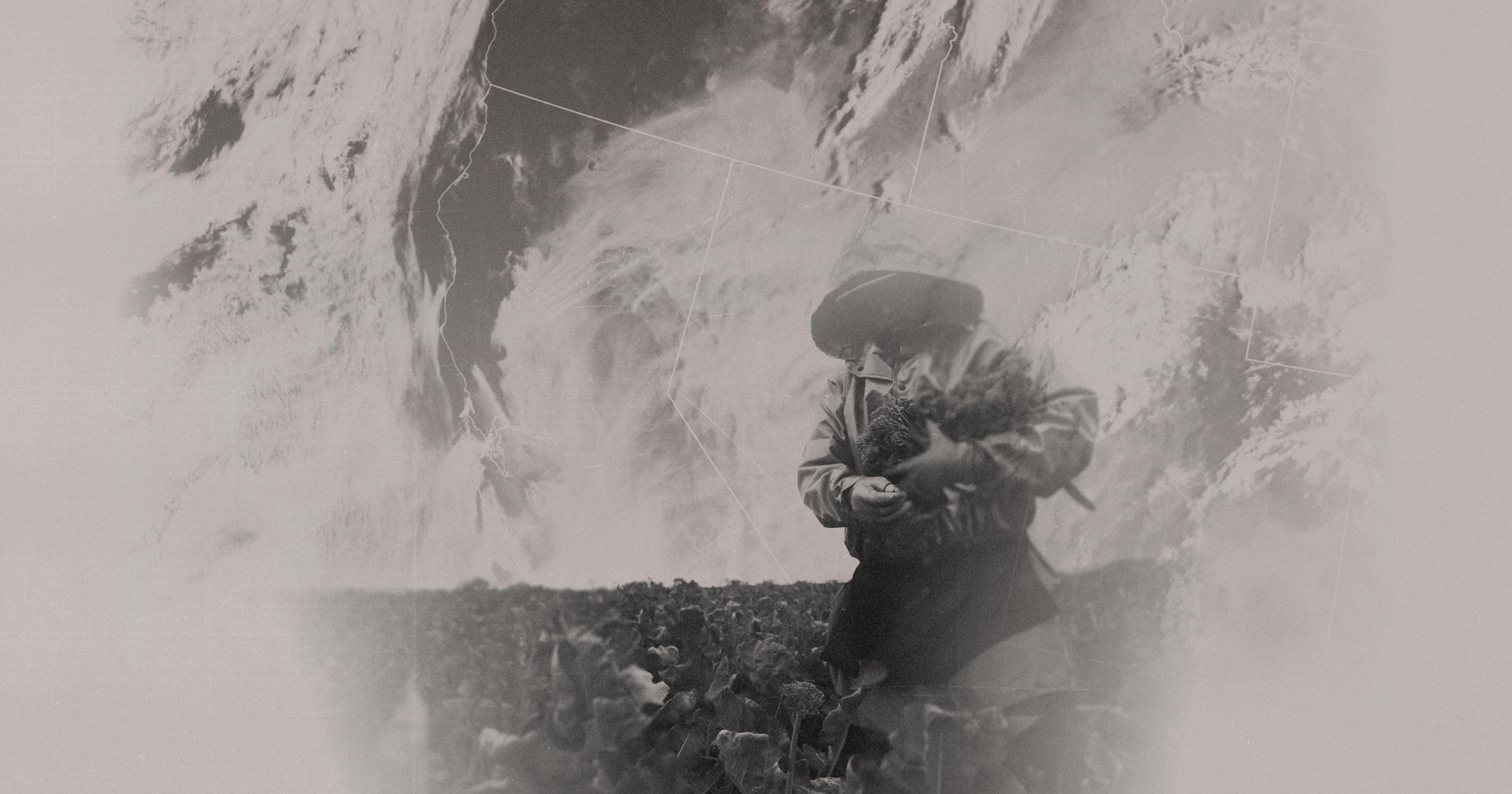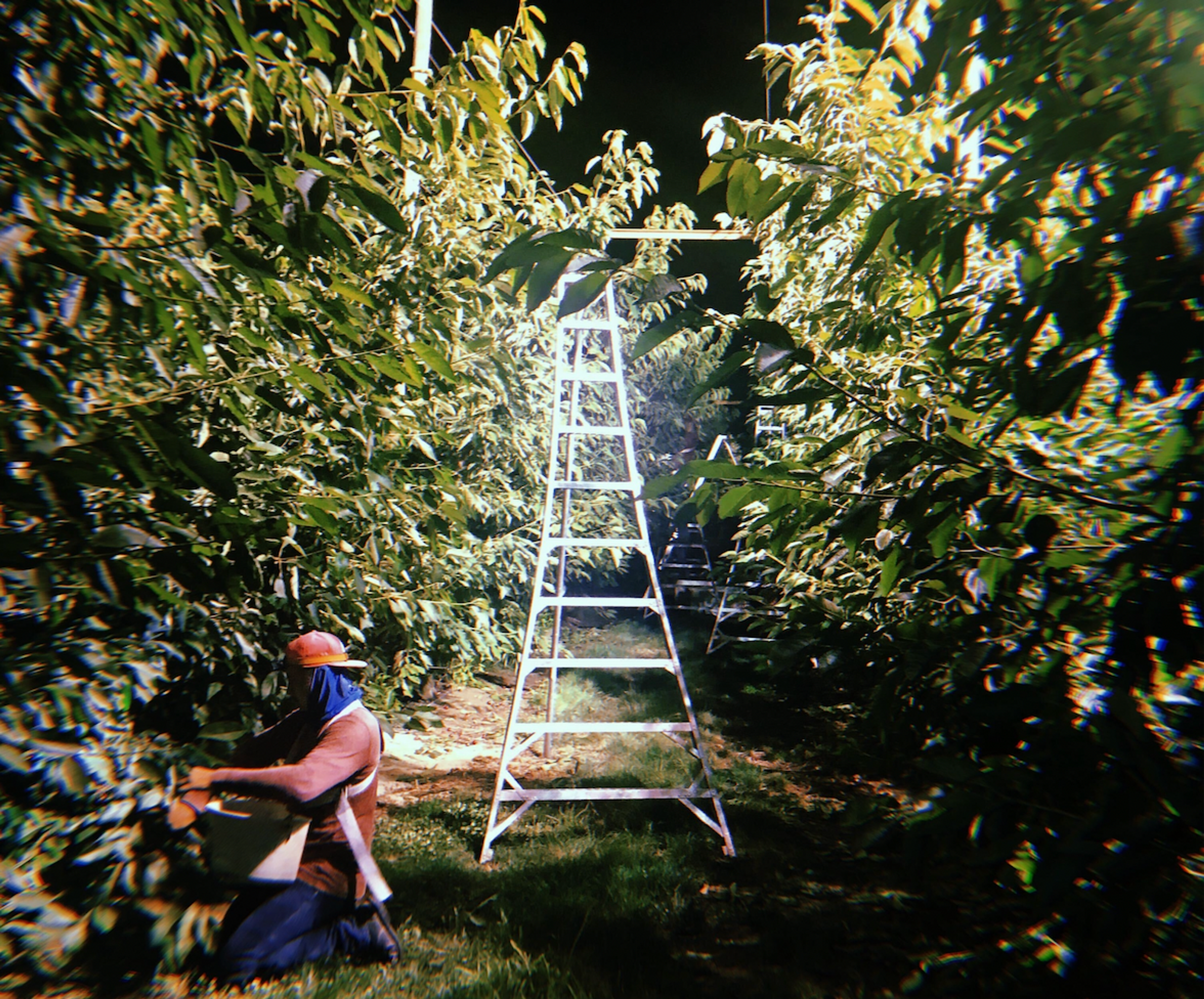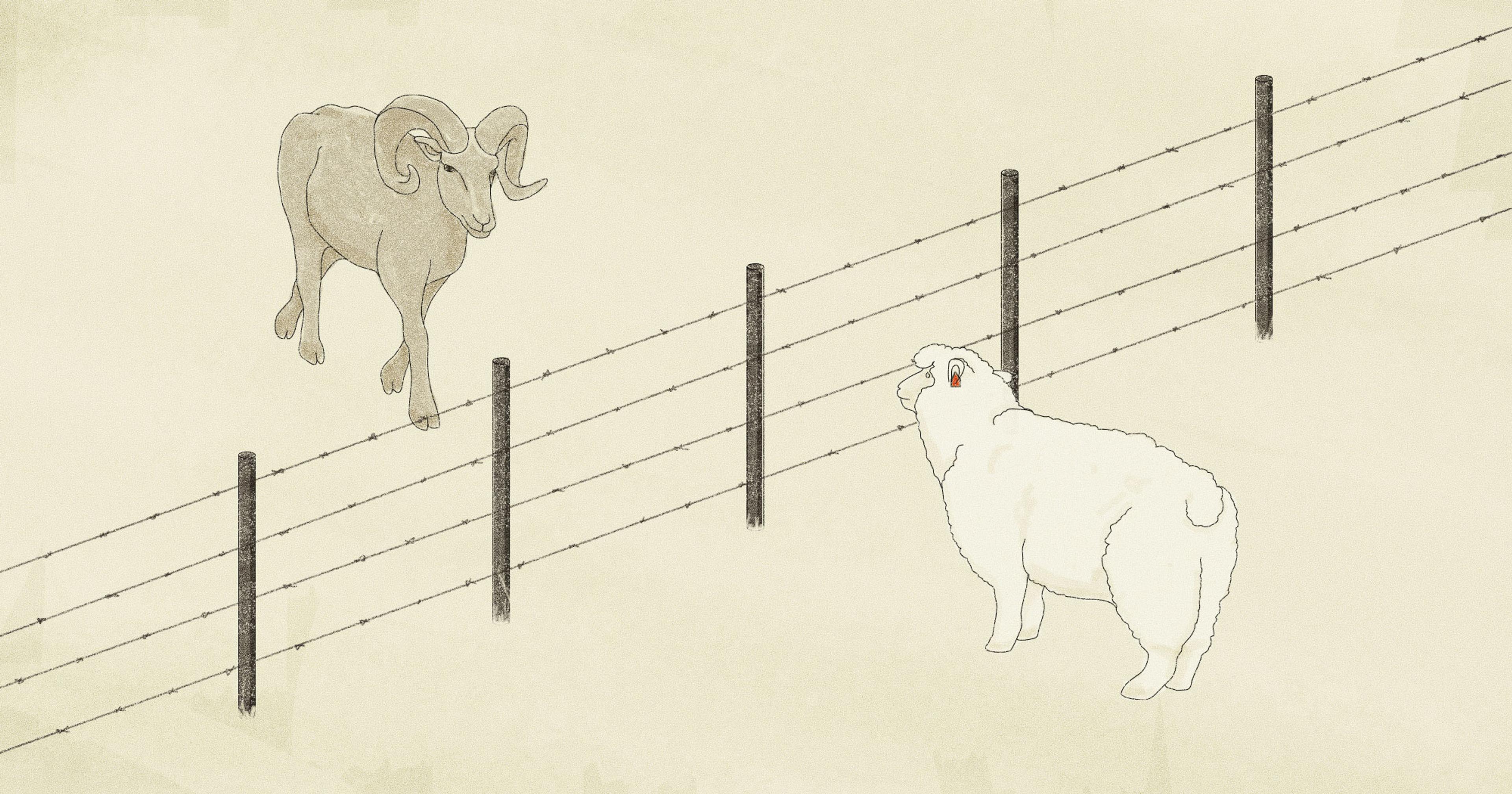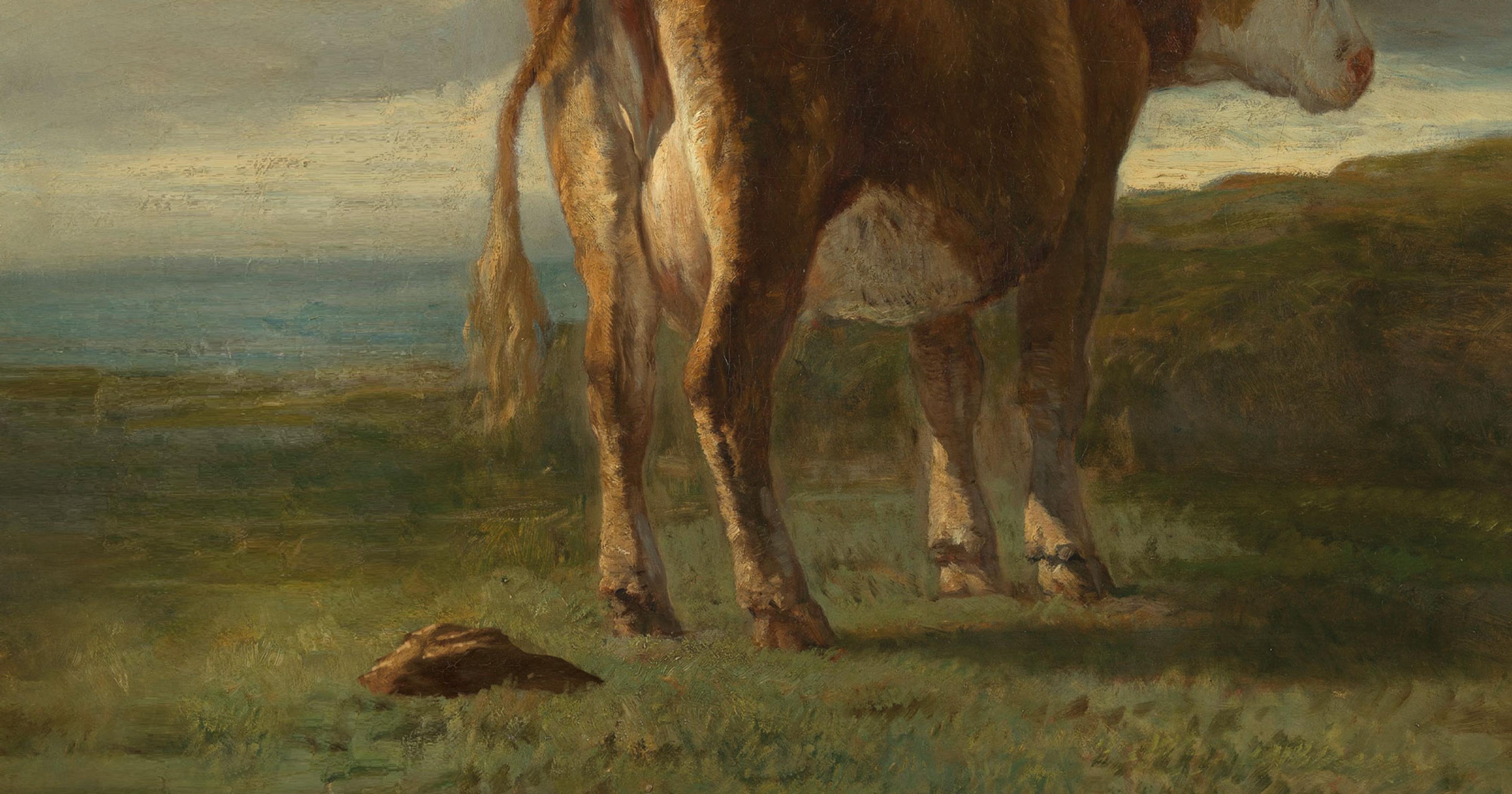A natural mutation found in Puerto Rican dairy cows might keep them healthier in extreme heat.
This article was published in collaboration with Nexus Media News.
At Vaqueria El Remanso, a small dairy farm in the hills off the north coast of Puerto Rico, the cows are different — they have a freshly shaven, suave look. Their short hair is the result of a natural mutation known as “slick,” which Rafael López-López, who runs El Remanso, has been breeding into his cows for decades.
“In hot, humid conditions, the slick cows have an advantage,” López-López said on a scorching spring morning, walking among his herd in the shade of the milking barn. The genetic mutation that gives slick cows a shorter coat and more active sweat glands helps them maintain a healthy body temperature — an asset on our heating planet.
Cows are most comfortable in temperatures between 41 and 77 degrees Fahrenheit; livestock around the world are struggling to cope with hotter and longer summers. Over the span of just two hot, humid days in June 2022, an estimated 10,000 cows died in Kansas. This year, during the hottest July on record, hundreds of cows across the U.S. died of heat stress. Experts say it will only get worse.
In dairies, decades of breeding cows for increased milk production has made them even more susceptible to heat.
“How do they produce more milk? They eat more, they metabolize more,” said Peter Hansen, a professor of animal sciences at University of Florida who studies the slick mutation. “So any cow that’s producing more milk is going to be producing more body heat, which makes it harder to resist heat stress.”
When a dairy cow’s body temperature rises above her normal range of 101.5 to 102.8 degrees Fahrenheit — which happens when the heat index is greater than 72 — she experiences heat stress, meaning the ability to regulate her internal temperature is compromised. She grazes less (eating about 3-5% less per additional degree of ambient temperature) and has greater difficulty getting pregnant. That, in turn, compromises her milk supply. Heat stress also suppresses the immune system, leaving a cow more susceptible to disease.
Heat stress costs the U.S. dairy industry as much as $670 million annually, and scientists predict it could cause a 6.3% drop in milk production by the end of the century. To cope, farmers spend thousands of dollars running massive fans, sprinkler systems, and even fog machines to keep their cows cool.
Cows with the slick mutation, however, are managing relatively well. The mutation has been identified in at least six different cattle breeds around the world, including Carora cows in Venezuela and Senepol cows on the Caribbean island of Saint Croix.
“It must be a good mutation or it wouldn’t have been naturally selected so many times,” said Hansen. In natural selection, individual animals with traits that give them an advantage are more likely to survive and reproduce; the slick mutation appears to have presented an advantage for various cow species in hot, humid climates.
“I get 1,800 pounds [more] of milk per lactation from these cows and they reproduce more effectively.”
But it’s the slick Holstein in particular, first identified in Puerto Rico, that has dairy farmers paying close attention. Holsteins are the top milk-producing cow in terms of volume, but the temperate breed that originated in the Netherlands about 2,000 years ago isn’t well-adapted to heat and humidity.
Studies have shown that Holsteins with the slick mutation are able to keep their body temperature about 1 degree Fahrenheit cooler, meaning their milk production and fertility don’t drop as much during the hottest months.
“I get 1,800 pounds [more] of milk per lactation from these cows and they reproduce more effectively,” said López-López.
López-López started actively breeding the mutation into his herd in the late ‘90s and now about half of his 155 cows are slick. He also breeds and sells slick bulls to other farmers; he bred the world’s first commercially available slick Holstein bull that was homozygous. This meant he had two copies of the gene, guaranteeing that 100% of his offspring would also be slick.
Over the last five years, the genetics of that bull López-López sold have been used by American artificial insemination companies to breed more slick bulls. They’re selling the semen to farmers in southern U.S. states like Kentucky and Florida and in South and Central America, Indonesia, Thailand, and Qatar.
Research is still in its early days — scientists and farmers say that larger sample sizes will help them better understand under what conditions the mutation is most helpful. (A 2020 study comparing slick calves in Florida and California showed that the advantages of the mutation were more pronounced in the humid heat of Florida than the dry heat of California.)
Even still, it’s already widely seen as a promising strategy; breeding for the slick cows is listed among the adaptations to heat stress in livestock in the IPCC’s Sixth Assessment Report.
Breeding for the slick cows is listed among the adaptations to heat stress in livestock in the IPCC’s Sixth Assessment Report.
“Hot parts of the world are getting hotter, and parts of the world where heat stress was just an occasional problem are going to find that it’s a more severe problem,” said Hansen. “The more the climate is such that cows are exposed to a lot of heat stress, the more important the [slick] gene is going to be.”
The slick Holstein likely originated when Holsteins from the U.S. were brought to Puerto Rico in the 1950s to address malnutrition and increase milk production in the island’s dairy industry (which produces about 200 million liters of milk each year, making it the island’s top agriculture commodity). The Holsteins were crossed with Criollo cows, a breed raised for both beef and dairy that’s become heat-tolerant in the centuries since Spanish colonists brought them to the island. Researchers suspect that these cows already had the slick mutation and passed it on to the Holsteins.
Puerto Rican farmers called these glossy black and white cows rabo fina, meaning thin tail, and, at first, they were thought to be inferior. “When I was young, I used to see really beautiful slick heifers,” said Héctor Sánchez-Rodríguez, professor in the department of animal sciences at University of Puerto Rico (UPR) and author of a comprehensive review of the mutation’s history on the island. “Cattlemen would sell them because they weren’t purebred.”
But after now-retired University of Florida professor of animal breeding Tim Olson identified the mutation and partnered with scientists in Puerto Rico to conduct research in the early 2000s, farmers started learning about the value of the gene through university extension programs, artificial insemination companies, and word of mouth.
Researchers also think slick cows may be better able to produce reproductive hormones because they’re not spending excess energy releasing heat from their bodies. Esbal Jiménez-Cabán, professor of animal sciences at UPR pointed out that — in both humans and animals — reproduction is among the first functions to be compromised in adverse conditions.
“If a guy is stressed, his sperm count goes down. If women don’t eat well, the menstrual cycle goes crazy,” he said. “A wild-type animal, when it’s fighting the heat in the summer, it will prioritize staying alive.”
The goal has been to breed cows that are slick and also have other traits that farmers look for, like decreased risk of disease and high milk production.
A study from 2013 to 2016 comparing slick and wild-type cows (those without the mutation) on Lopéz-Lopéz’s farm showed that the calving interval — the time between when a cow gives birth and when she is able to get pregnant again — of the slick cows was about 1.6 months shorter than those without the mutation. And that’s valuable for farmers, Jiménez-Cabán explained. “If you have an animal who is not producing, you are [still] spending a lot of money on that animal — so you want to shorten that time as much as you can.”
In the mainland U.S., researchers and breeders say the slick gene is still nascent, with a small number of Southern farmers breeding it into their herds. But since López-López sold his bull Sinba to a breeder on the mainland, more U.S. breeders and artificial insemination companies have started working with the mutation. The goal has been to breed cows that are slick and also have other traits that farmers look for, like decreased risk of disease and high milk production.
Though Sinba had a higher tolerance for heat, he didn’t have the genetics American farmers typically value. “Sinba was a local boy from Camuy, Puerto Rico, a humble guy,” López-López joked. “Suddenly, they bring him to the states and he marries the daughters of the Rockefellers and the Kennedys.” All Sinba’s offspring are slick, plus they have more of the desirable traits the heifers have long been bred for.
This improvement in genetic scores, based on a combination of economically important traits, has taken time, which is why adoption of the mutation among American farmers has been slow, said Jeffrey Bewley, a breeder in Kentucky who sells slick embryos.
Bewley has spent much of his career focused on cattle housing and cooling technologies. (Most dairy cattle in the U.S. are housed in barns with fans — just 20 percent of lactating cows have “some access” to pasture.)
“Despite all of our efforts to try to cool the cow, there’s still effective heat stress,” Bewley said, noting that cows experience heat stress about 150 days of the year in Kentucky. “What really resonated with me was the idea that we might be able to breed for an animal that’s better able to handle the heat, instead of just changing their environment.”
“If something happens and we’re isolated here, those cows will feed us.”
About five years ago, Bewley started selling embryos to farmer David Corbin, who manages 300 dairy cows in Campbellsville, Kentucky, and sells their milk to Borden. About 10 of his cows are slick, two of which are milking. Anecdotally, Corbin has noticed a difference.
“She was just laying in her free stall chewing her cud,” Corbin said of one of his lactating slick cows, while the other cows were cooling down by the water trough. “I don’t have no way of telling you that this cow’s cooler than the rest of the cows, but she seems to be more at ease with it.”
He plans to keep growing the number of slick cows on his farm, especially since he’s seen good milk production from the first two he’s been milking. “If you can get that trait and you don’t have to give up the other stuff, why wouldn’t you?”
Despite its promise, breeders, farmers, and researchers agree the slick mutation is not a cure-all for heat stress. They say it should be used in combination with other cooling strategies, like planting trees to provide more shade on pastures.
It’s also worth noting that the dairy industry is contributing to exactly the climate impacts farmers are trying to combat. Livestock is the second-largest emitter of methane (28 times more potent than carbon dioxide in terms of its warming impacts) in the U.S., behind natural gas and oil systems. Even excluding methane, the climate footprint of dairy cattle is 10 times that of beans and more than 20 times that of peas for the same amount of protein.
Which raises the question: Is the slick gene enabling the expansion of an industry that should be rapidly declining?
Is the slick gene enabling the expansion of an industry that should be rapidly declining?
The answer depends on where in the world you are, said Philip Thornton, emeritus fellow at the International Livestock Research Institute. “Consumption [of livestock products] in the global North has to decrease massively and faster, whereas in the global South it needs to increase for a sustainable, just, healthy diet.”
Comparing the circumstances of dairy farms in the U.S. with those in Puerto Rico is a bit like looking at a microcosm of the global North and the global South.
Mainland U.S. farmers continue to spend more running fans and cooling systems in indoor ventilated barns, increasing costs and climate impacts. And the average American consumes about three times the amount of milk as the world average (and five times the average in developing countries). But it’s notoriously difficult to get consumers to change eating habits, and there seem to be very few good examples of policies or taxation regimes that have been effective, said Thornton.
“It’s a real massive conundrum,” says Thornton, “And the longer we leave it, the more challenging problems become and the costs of adapting and mitigating become even higher than they already are.”
In Puerto Rico, as in the global South as a whole, farmers are dealing with more severe impacts of heat stress on their herds and have fewer resources to adapt. At the same time, the dairy industry provides about 25,000 jobs and accounts for about 23% of the island’s gross agricultural income; it’s a critical aspect of Puerto Rico’s livelihood and food security.
“We’re self-sufficient in fresh milk,” said Guillermo Ortiz-Colón, professor in the college of animal sciences at UPR who’s leading a series of climate adaptation courses for farmers on the island. “That’s like the last straw — everything else [85% of food] gets imported. If something happens and we’re isolated here, those cows will feed us.”
With the warming experts predict is ahead, adapting is only going to get more challenging and costly for dairy farmers around the world. “In the U.S. or in Europe, costs of production may increase, but you still have the wherewithal to do that,” said Thornton, whereas the adaptation options for farmers in developing countries are much more limited.
“This just goes to show that we need to mitigate global greenhouse gas emissions as quickly as possible,” he added. “It always comes down to that bottom line.”

